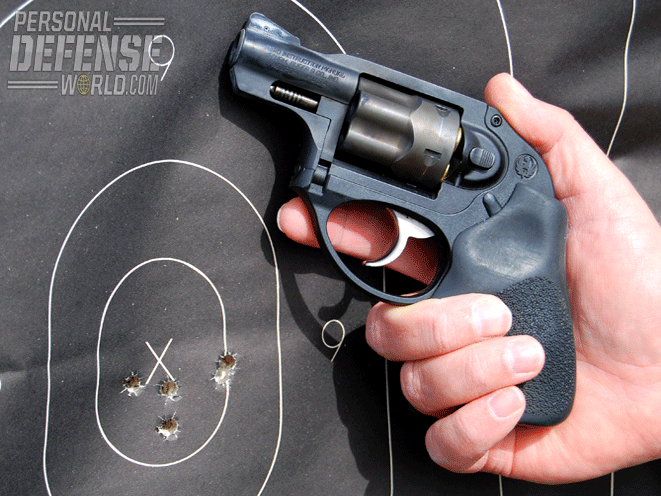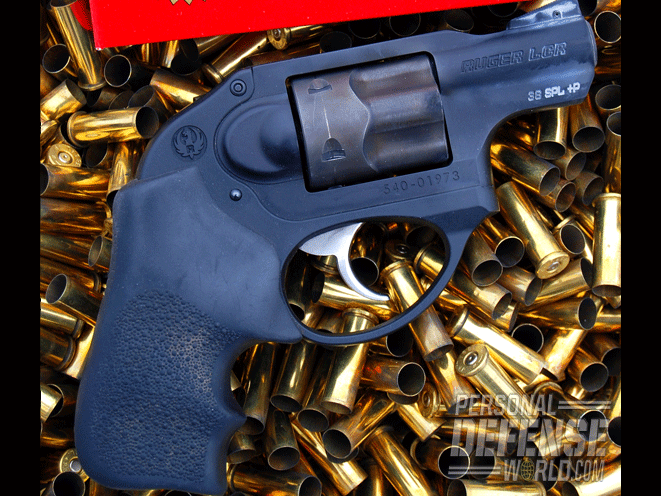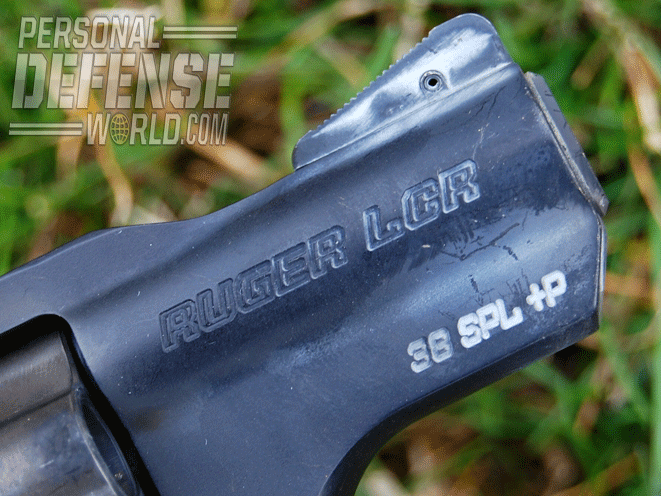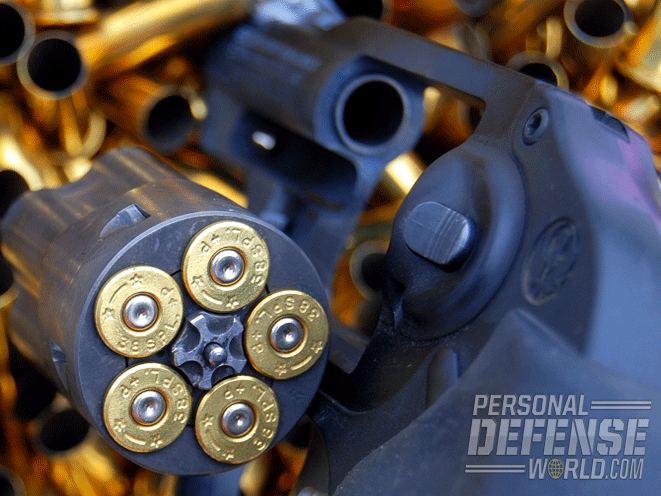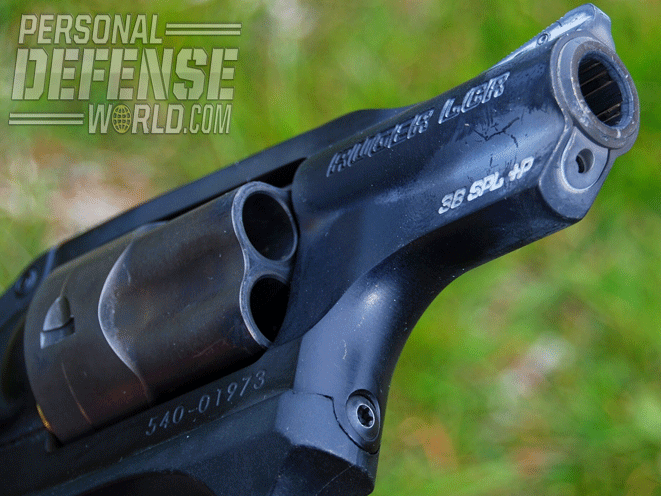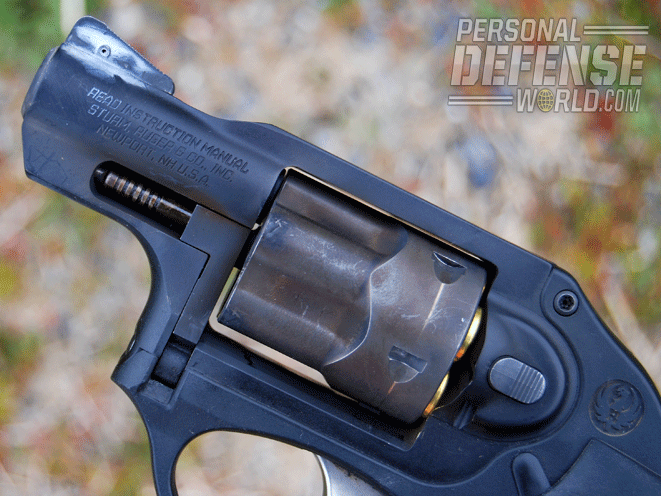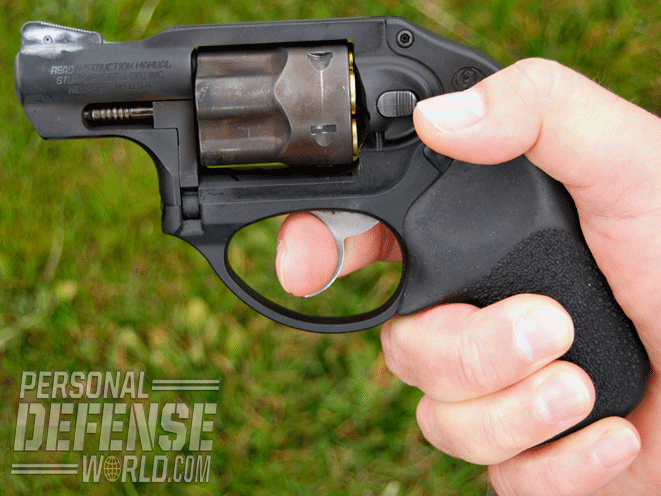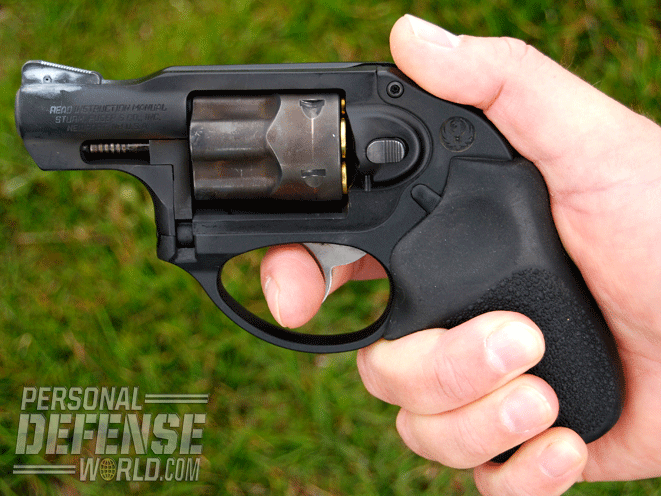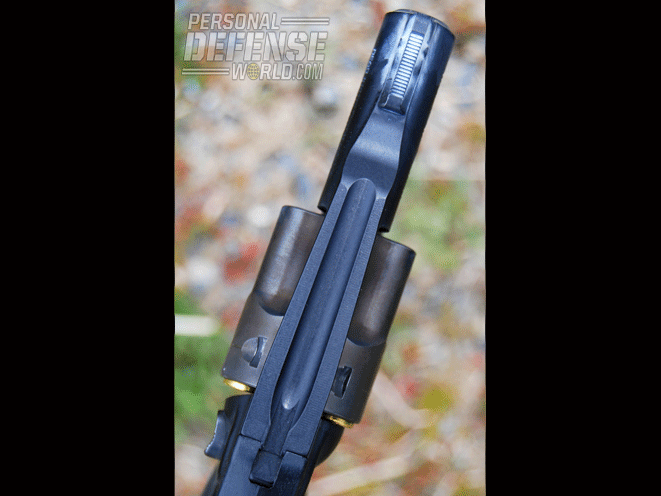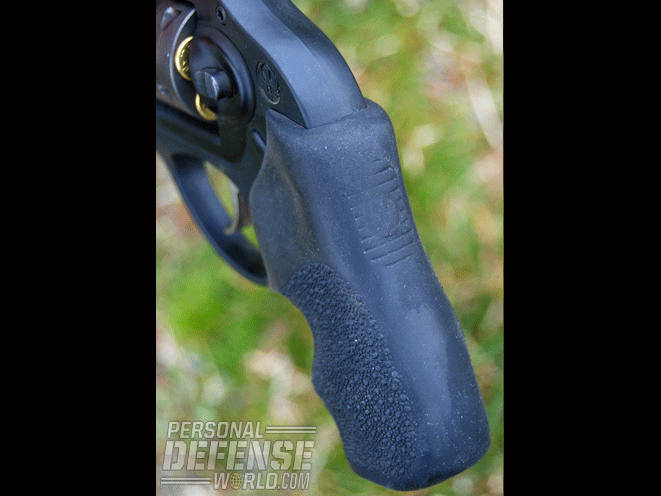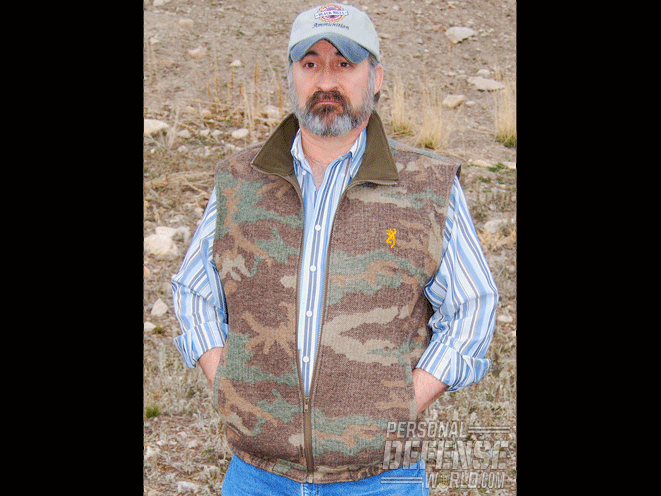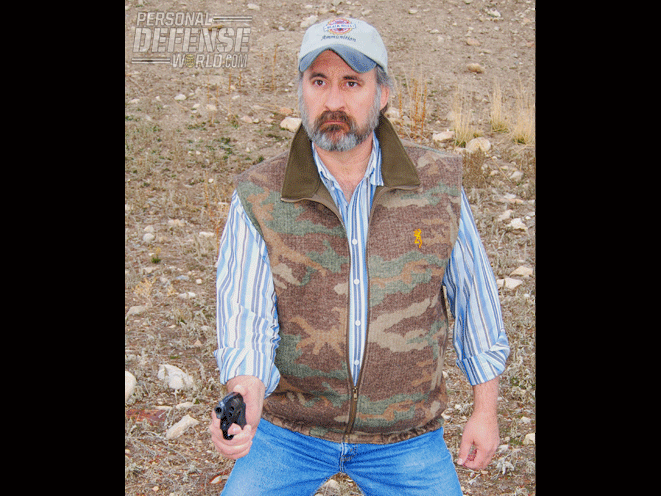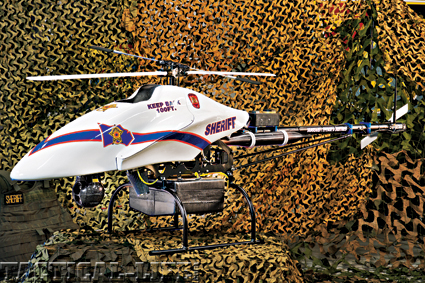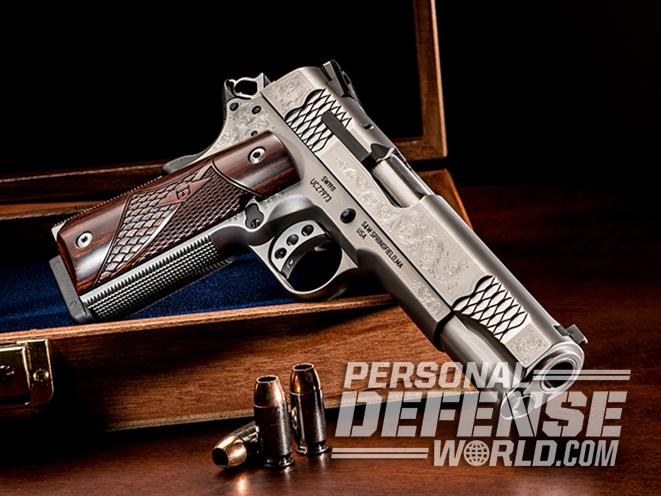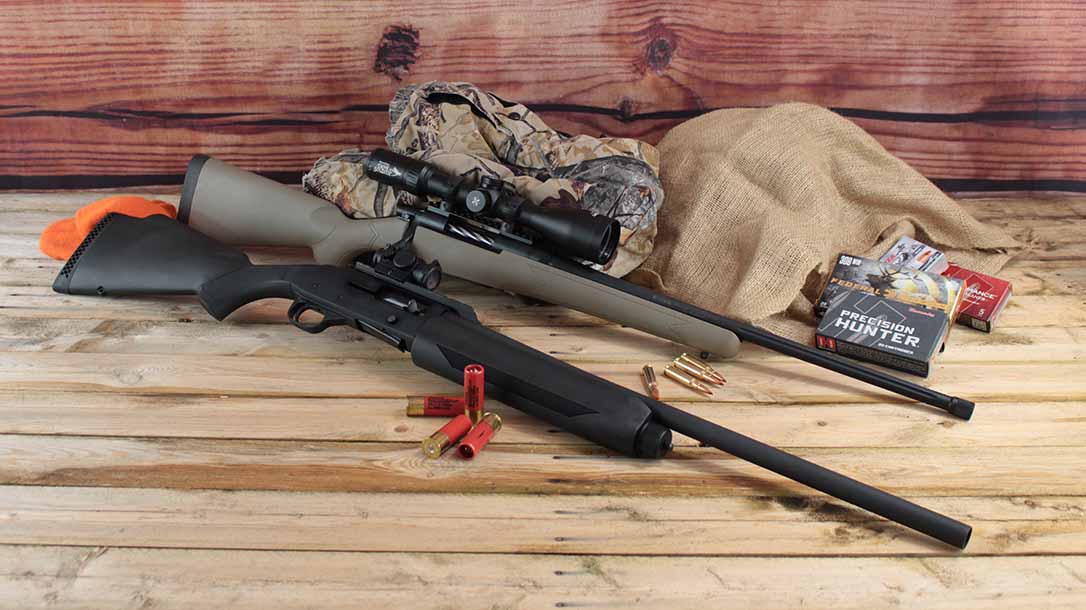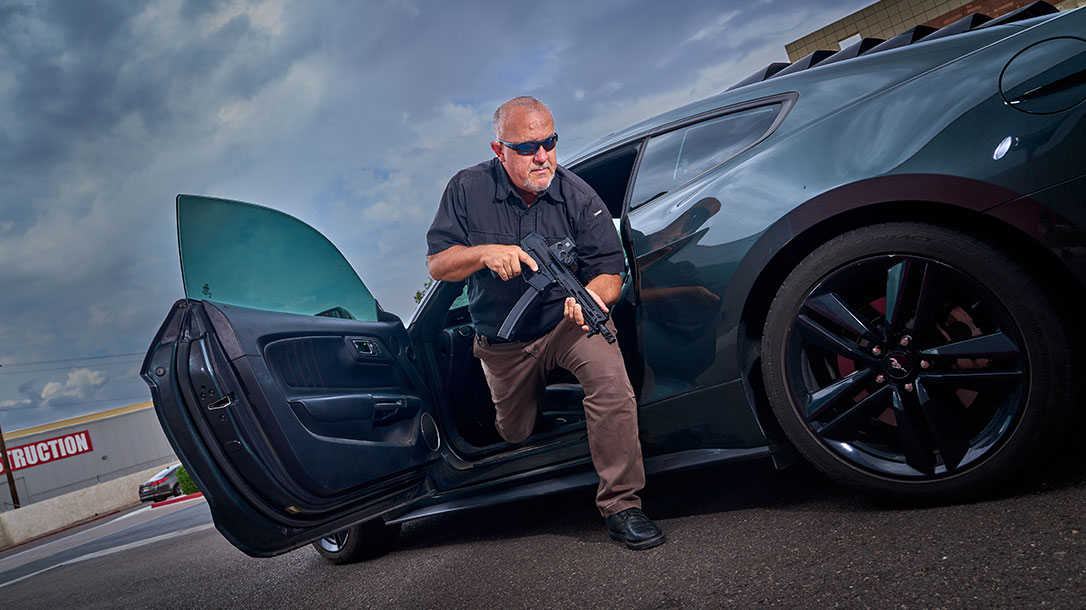This is one of those very rare cases where you’ll see a gunwriter mention right up front and right out loud that he was surprised the product under review actually held up through testing. I’ll step outside the box, as Ruger did in designing it, by saying when I saw the official announcement on January 14, 2009, about the brand new .38 Special snub-nosed LCR (Light Carry Revolver) made mostly of polymer and aluminum, my immediate thought was, “No way can that thing go the distance!” Years ago I was finally able (with extensive therapy) to make the conceptual adjustment from all-steel snubs to aluminum/titanium/scandium snubs… but a polymer-framed .38 Special?
But, curiosity got the best of me and I put a project together. Ruger provided a sample LCR, and the good people at Black Hills Ammunition agreed to ship 5,000 rounds of their best premium 125-grain .38 Special JHP +P loads for an endurance run. The results were quite interesting, but first some background on the gun.
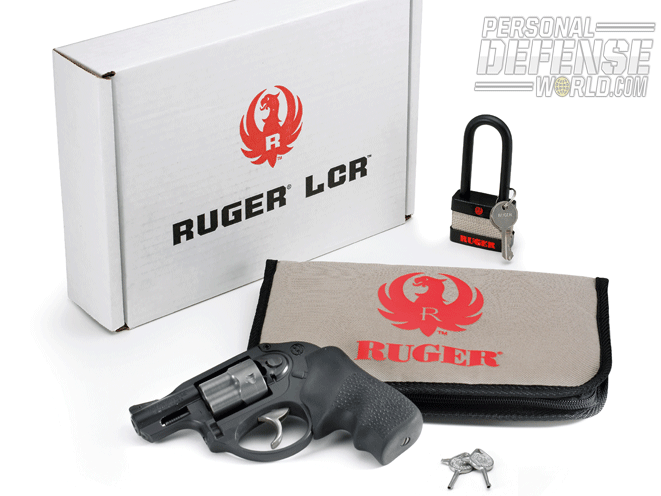
Gun Details
If you’ve spent the last year in Guatemala and missed the fuss, the LCR is a small-framed 13.5-ounce 5-shot double-action-only (DAO) .38 Special revolver with a 1.88-inch barrel and oversized black Hogue rubber grips, in standard form. That much is nothing startling, but the way Ruger’s engineers went about it is. The LCR is built with three main assemblies: a polymer fire control group, an aluminum monolithic frame, and a stainless steel cylinder. Let’s break that down.
The lower polymer section (what I’d call a sub-frame) is the base that everything else hangs on. It includes the grip “strut,” the action parts, and part of the rear sight. Trigger, hammer, pawl, transfer bar, coil mainspring, and so on are all inside and the one-piece Hogue grip attaches on the outside. Selected for weight reduction, durability, and easy molding characteristics, the use of polymer in a major revolver component has since been tried elsewhere but was at the time unprecedented. Ruger uses a high-quality glass-filled nylon for their synthetic pistol frames with great success, but adapting the material to the stresses and wear created by recoil itself in the upper frame and the various crosspins used through the sides to pivot key action parts like the hammer, trigger, and cylinder latch (bolt) was unheard of.
What Ruger calls the frame is a 7000 Series aluminum forging treated with a black hardcoat after final machining. Ruger says the coating exceeds mil-spec salt tests and resists at least 30 different chemicals (including popular cleaners). The LCR’s 17-4 pH stainless barrel sits inside an outer shroud as a forward extension of the alloy frame and a serrated black steel ramp front sight blade pins into the shroud. The rear sight is a wide and shallow squared U-notch behind a typical long groove in the topstrap that corresponds to the same notch in the top of the polymer section.
The 400 Series stainless steel cylinder is an odd-looking duck with exaggerated fluting, offset cylinder stop notches between chambers to maintain chamber wall strength in the small-dimensioned cylinder, and surfaces coated with a specially developed version of Ruger’s Target Grey finish. The front cylinder latch incorporates titanium components to maintain positive lockup under the substantial recoil generated by +P loads in such a light revolver, and the pinless extractor star uses angled “leg” tips to orient it in the rear of the cylinder. Unlike Ruger’s other current medium and small-framed double-action revolver designs, the ejector rod is a more or less conventional type that’s centered through the cylinder and not an offset hollow shaft.
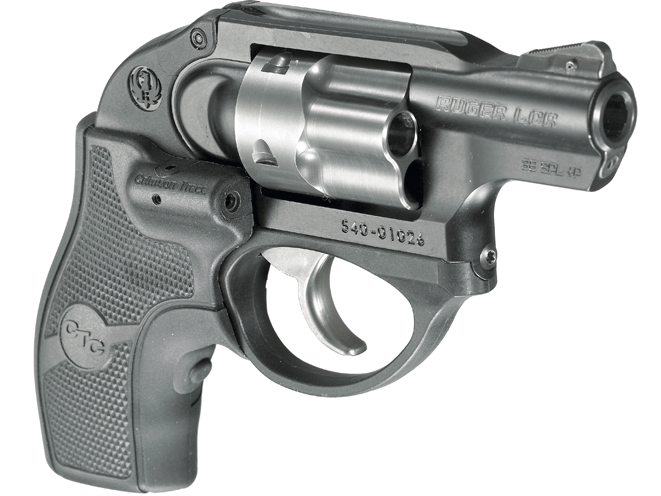
Test Parameters
There were several major concerns with the LCR. Could the mechanism itself hold up over the long run? Would action pins loosen up in the polymer frame? Even though the gun is rated for +P, would the joint between the two frame sections loosen under the repeated pounding of +P pressures? Would the cylinder walls expand? Would the cylinder experience setback? Would the barrel/cylinder gap increase? Would the polymer frame crack? Would the alloy frame stretch? Would the barrel maintain accuracy, or lose it?
A test protocol was developed. First, the LCR would be tested for accuracy off the bench with five different commercial .38 Special loads, in both standard pressure and +P, and using different bullet weights and types. Then, the 5,000 rounds of +P would be fired, during which free-standing accuracy testing would be done at different distances and general handling characteristics noted, and after which the same five loads would be fired for accuracy again off the bench. Several external measurements would be taken before the shooting began, and repeated after it ended. The plan was to see if the LCR could make it through over 5,000 rounds, and if so, what shape it’d be in at the end compared to what shape it was in at the beginning.
Related Stories: Crimson Trace Unveils New Lasergrips for Ruger LCR & LCRx
Range Time
Once the baseline measurements were recorded, it was off to the gravel pit. I try to use 25 yards for accuracy testing with most defensive handguns above .25 ACP, and that includes .38 snubs. Fifteen rounds of high and wide groups put a stop to that almost immediately—it was Testus Interruptus and back home for a call to Ruger. Once company spokesman Ken Jorgensen told me they’d be happy to send another sample along, but they did consider the LCR to be a 15-yard gun and that’s what they’d done their own testing at, I shrugged and started over in the pit at that distance. Fair enough, we knew it’s not built for long-range shooting anyway.
The LCR still averaged a shade high and left, but the accuracy baseline was laid down and then the tedium set in. Firing 5,000 rounds may sound like Christmas to some, but in reality it’s mostly boring. Starting out, the sharp recoil of the LCR tore skin on the inside of my thumb when using a conventional hold. The oversized Hogue Tamer grips work just fine on my 4-inch Ruger Redhawk .44 Mag with heavy loads, but the dimensions of the smaller Tamers on the LCR and my hand never quite mated up well. Early on in the first 150-round session I had to revert to a glove and even then found that using a modified hold with the thumb placed on top of the polymer frame was the only way to avoid tearing both hand and the glove itself up.
I’m not normally sensitive to recoil, but the first session of 150 rounds left my hand and wrist sore, and too shaky to write with a pencil. The second session of 350 rounds did the same, but after that in 500-round-per-day sessions spread out over five weeks as weather allowed, the hand and wrist toughened up enough to the point that it was no longer a problem. Toward the end, I was even able to lose the glove, as long as I kept my thumb on top.
Related Stories: Ruger Introduces New LCR in 9mm
During the 5,000 endurance test, the gun was not babied. The LCR was loaded, fired, loaded, fired, and so on with no deliberate time-outs beyond normal breaks in the action to open another 50-round box of ammunition, and the gun got moderately warm at times. With outside temps running from mid-20s to mid-50s, the average time per 500-round session was 60 to 70 minutes. The snub was superficially cleaned every thousand rounds by running two wet CLP patches through the bore and chambers followed by two dry patches, swabbing around the inside of the frame’s cylinder window with a wet patch, wiping down the cylinder face, cleaning carefully under the extractor star where it tended to accumulate burned powder gunk, adding three drops of CLP to the hammer pivot pin (per the manual’s instructions), one drop to the ejector rod shaft at the front and under the star at the rear, and one drop to the cylinder latch at the bottom of the frame window. The manual also states that the upper screw holding the two frames together at the rear sight and the lower front crane screw should be tightened every thousand rounds. I checked at all five cleaning occasions and they only needed tightening on the first two.
During the last 500 rounds of the test ammunition, I set up silhouettes and worked with the LCR at varying distances and with varying holds, sighted and un-sighted. And, on the final session, the snub was tested again for accuracy off the rest at 15 yards. The following day, the baseline measurements were repeated.
And…the LCR made it crystal clear that Ruger’s engineers do know just a little more about building polymer revolvers than I do.
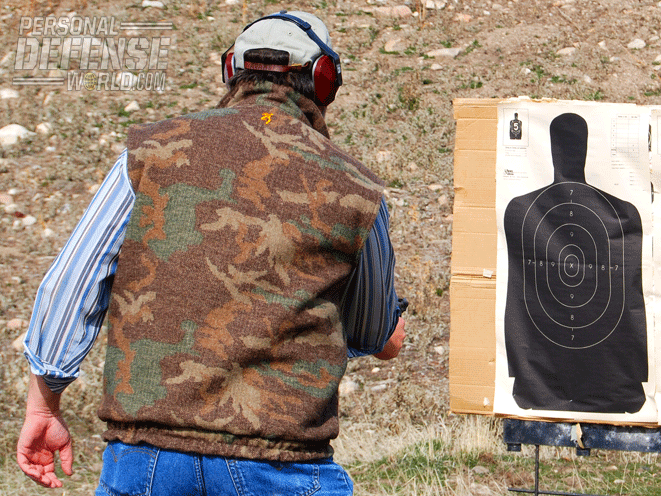
Results
First off, aside from whether or not the Hogue rubbers fit your hand, there is one physical characteristic of the LCR that needs comment, even if only as a reminder. Internet forums are producing complaints from posters about the DAO trigger; some are finding the relatively long reset to be a problem in that it tends to not rotate the cylinder around for a subsequent shot if not allowed to go fully forward after the previous shot. While the reset on this DAO trigger is longer than a comparable S&W J-frame .38 (by less than a quarter of an inch), it’s not a design flaw, it’s just a matter of learning to make damn sure you let that trigger go fully forward after every shot and don’t short-stroke it. I’d suspect the people who have the greatest problem here are autopistol shooters that are used to shorter resets between shots. Learn the gun, and it shouldn’t be an issue. In my own case, using a glove caused several short-stroke interruptions, and even a couple ungloved ones when I let my attention wander. The trigger pull itself is smooth, with superior leverage that leaves it noticeably lighter than my J-frame .38s, and there were zero misfires throughout testing.
Understanding the LCR will yield the best results. It is not, as mentioned, a target piece. Ruger intends it to be used up close. In line with that, there are three different holds I experimented with. The standard “wraparound” grip may or may not draw blood but offers full use of the sights. During freestanding 25-yard two-handed slowfire, I could keep all hits at least somewhere on a B27 silhouette, as long as we both stood still. At 15 yards, two-handed freestanding slowfire produced one 5-shot group of 4.63 inches on the silhouette as a typical indicator of what to expect. At 7 yards, a two-hand slowfire string measured 1.06 inches. At 5 yards with a slowfire one-hand hold, five shots measured 1.81 inches. At 3 yards, the same measured a best of 1.19 inches.
A second hold allowing sighted fire moves the thumb up higher where it rests on the ledge provided by the top of the rubber grip. This can be used either one- or two-handed, and it may increase muzzle jump slightly depending on how high you also move the grip in hand to compensate. Accuracy should be about the same, and the tacky rubber doesn’t abrade the inside of the lower thumb.
Related Stories: FIRST LOOK — Ruger LCRx .38 Special
The third hold is the best for quick and close work. During most of the endurance run, it turned out that the frame curve creates a very natural rest for the thumb on top, and while you obviously lose the sights with the thumb there, you gain a fair amount of rapid fire control in fixing the LCR firmly in hand. I found that a thumb-on-top hold combined with a version of the old FBI crouch gave me both speed and accuracy in one-handed unaimed fire out to 15 feet or so. This obviously decreases with distance, but at the conversational (and confrontational) proximity of 6 feet, I put five un-aimed holes into 1.56 inches directly inside the X ring as fast as I could pull the trigger. The thumb reduces muzzle climb on each shot and helps hold on target during rapid firing. If I were planning to carry an LCR often, that thumb on top hold would be the one I’d plan on using the most.
Endurance-wise, 5,000 rounds of full-bore +P jacketed loads wore off most of the Ruger logo on the back of the grip, but aside from that the only real visible signs of wear once the gun was cleaned up completely were the drag line through the grey finish on the cylinder and a small crescent below the firing pin channel in the breechface worn through the black hardcoat from repeated case rim abrasion during recoil. I have an alloy J-frame with a breechface furrow worn into the surface by the centerpin on closing the cylinder less than 500 times. Whatever process Ruger uses on the LCR left it with no furrow and not even a scratch in the surface there from closing its cylinder approximately 5,300 times. The trigger pull dropped from 10 pounds to 9 pounds, the barrel/cylinder gap grew from 0.008 to 0.010 of an inch, and the distance from the forcing cone to the breechface increased from 1.637 to 1.640 inches. All other external dimensions remained the same, the forcing cone gauged GO at the beginning and the end, and no play between the two different frame sections and materials developed at all. There’s a bit more fore and aft play in the cylinder, but no more than I’m seeing on many brand new unfired revolvers nowadays to begin with. And, accuracy actually improved after those 5,000 rounds.
Final Notes
With the caveat that the LCR is not intended to be a high-mileage gun and not built for several hundred rounds a week at the range indefinitely, now that it’s been out for a year and the dust is settling, it’s proven itself to be a viable revolver for at least 5,000 rounds. Seeing three-thousandths of an inch of frame stretch with continuous +Ps, how far you’d make it past 5,000 rounds would depend on ammunition (and in no way am I saying it’s only a 5,000-round gun). Ruger has tested guns to 10,000 rounds and they were still functioning fine at the end of their test. Using lower-pressure loads would extend the revolver’s usable service life, but at some point beyond that you’re looking at potentially stretching the frame into headspacing and ignition problems. In the meantime, since the LCR is no recreational device, 5,000 rounds is far more than most of us will ever put through a lightweight snub like this in a lifetime of ownership. The original specs for the Beretta M9 military pistol detailed a required service life of 5,000 rounds, if that helps put anything into perspective.
I know when I’m licked. As a light, compact, and reasonably powerful all-day carry proposition, Ruger’s little polymer .38 is clearly good to go. Many thanks to Ruger and Black Hills for their help with this project.
Specicfications: Ruger LCR
CALIBER: | .38 Special +P |
BARREL: | 1.88 inches |
OA LENGTH: | 6.5 inches |
WEIGHT: | 13.5 ounces (empty) |
GRIPS: | Hogue Tamer |
SIGHTS: | Fixed |
ACTION: | DAO |
FINISH: | Matte black |
CAPACITY: | 5-shot |
PRICE: | $525 |
This article was originally published in CONCEALED CARRY HANDGUNS® 2011. Print and Digital Subscriptions to CONCEALED CARRY HANDGUNS® magazine are available here.
Related Stories: Preview: Ruger’s Compact Firepower For Concealed Carry













